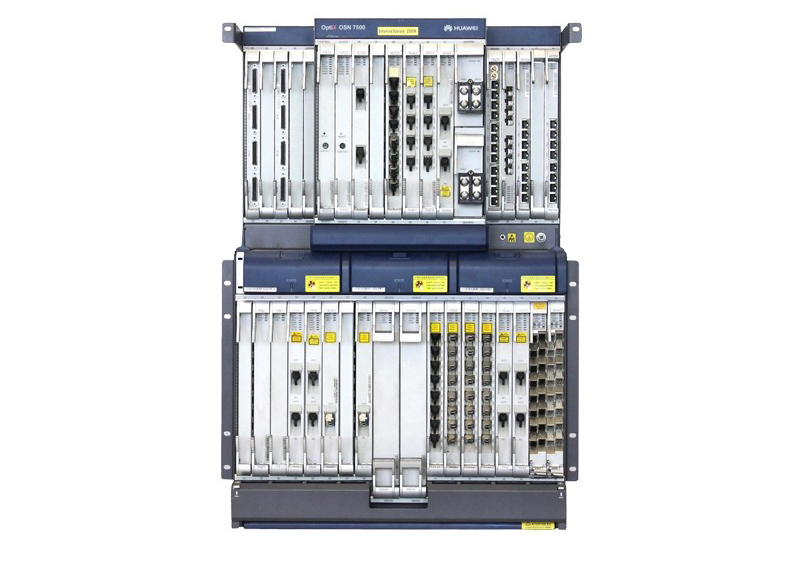In our daily life, we can see base stations everywhere. It looks like this:

However, if you observe carefully, you will find that on the roof of some buildings, in addition to the base station, there will be some devices like “big drums”.

These “big drums” are what we usually call “microwave equipment”. More accurately, it is the “microwave communication antenna.”
Microwave communication refers to the method of using microwave (Microwave) as a carrier to carry information and carry out relay communication.
Nowadays, although wired transmission networks dominated by optical fiber communication dominate, we still cannot do without microwave communication in some special application scenarios. For example, in remote areas, it is too difficult or costly to deploy cables, or when natural disasters occur, optical fiber transmission is damaged.
Compared with optical fiber communication, microwave still has many irreplaceable advantages. For example, the cost is low, and the ability to resist disasters is strong.
What are the specific differences between them?
First of all, when we talk about microwaves, we may think of microwave ovens in our minds. Microwave ovens are actually an application that makes good use of microwave principles, but the most important thing for microwaves is the communication in our lives. The signals of our mobile phones can be transmitted in Internet browsing is the way microwave is applied in our lives. Of course, the same can be done as an optical fiber. We often hear that the home needs to install an optical fiber with a faster network speed. The Wi-Fi router is a form of optical fiber communication.
Then these two are also the methods of transmitting the traffic in our lives, but they are very different in principle. Microwave is wireless, it transmits information through wavelength reflection, and optical fiber is a kind of wired data transmission through wire, and this principle also leads to some of their characteristics. The wavelength range of the microwave causes its poor penetration and is susceptible to interference of the same frequency, which also makes it less stable than that.
In this way, it seems that microwave is more inferior, and in today’s optical fiber era, optical fiber coverage is larger, and it is also the main transmission method of our base station. Microwave replacement of optical fiber is not ideal. The reason why some people think that the arrival of 5G to make microwave transmission faster will affect the results of both parties, but also that too many factors have not been considered.

The transmission speed of optical fiber is incomparable to microwave, and its stability is higher and it will not be affected and interfered as easily as microwave. However, compared with optical fiber communication microwave, it also has advantages that others cannot replace. Its cost is low, and its construction will be more flexible and faster. This advantage allows microwave to be popularized in many places and in an environment where optical fiber cannot be constructed. Can be replaced by microwave. In some places, it is difficult to build and deploy optical fibers and the cost is very high.
| Type | Optical transmission | Microwave transmission |
| Transmission medium | Optical Fiber | Free space |
| Resistance to natural disasters | Weak | Strong |
| Flexibility | Low | High |
| Cost of Construction | High | Low |
| Period of Construction | Long | Short |
| Transmission rate | High | Low |
Composition of optical transmission equipment:
Optical transmission equipment includes MSTP, WDM, OTN, PTN and optical fiber and other accessories.
MSTP (Multi-Service Transfer Platform) (SDH-based multi-service transfer platform) refers to the simultaneous realization of the access, processing and transmission of services such as TDM, ATM, and Ethernet based on the SDH platform. Dao provides multiple services for unified network management. Business node.
WDM (Wavelength Division Multiplexing) combines two or more optical carrier signals of different wavelengths (carrying various information) at the transmitting end through a multiplexer (also called a multiplexer), and the technology of transmission in the same optical fiber coupled to the optical line. This type of equipment uses this technology.
OTN is the Optical Transport Network, a next generation backbone transport network with WDM technology and Optical layer network. This type of equipment uses this technology.

PTN (Packet Transport Network, Packet Transport Network) refers to such an optical transport network architecture and specific technology: a layer is set up between the IP service and the underlying optical transmission medium, and it aims at the burstiness and statistical replication of packet service traffic. Designed with transmission requirements, with packet services as the core and support for multi-service provision, with lower total cost of use (TCO), while adhering to the traditional advantages of optical transmission, including high availability and reliability, efficient bandwidth management mechanisms and Traffic engineering, convenient OAM and network management, scalability, high security, etc. This type of equipment uses this technology.
Composition of microwave equipment:
Generally speaking, microwave equipment is mainly composed of IDU, ODU, intermediate frequency cable, antenna and other parts.
IDU is an indoor unit, Indoor Unit. ODU is an outdoor unit, Outdoor Unit.
Intermediate frequency means that the transmitter transforms the signal carrier into the transmitting frequency, or transforms the receiving frequency into an intermediate frequency of the baseband, which is generally determined by the system architecture.
The radio frequency is the frequency of the electromagnetic wave signal transmitted by the antenna and propagated in the air.
IDU is responsible for completing service access, multiple demultiplexing, modulation and demodulation, and converting service signals into intermediate frequency analog signals indoors, such as Huawei IDU (model RTN950).

ODU is responsible for the frequency conversion and amplification of the signal.
Needless to say, the antenna converts radio frequency signals into electromagnetic waves and radiates into the air. Or receive electromagnetic waves, convert them into radio frequency signals, and send them to ODU. In addition to the “big drum” that everyone sees, there are also parabolic antennas and Cassegrain antennas. This type of antenna is used in satellite communications.
It can be said that microwaves and optical fibers meet their different needs. It is more suitable to construct optical fibers in densely populated areas and urban environments with high-rise buildings, while it is more suitable to construct microwaves in a wide and flat environment without the obstacles of some buildings. They are not the competitors we think, but they are making up for each other.
Want to buy microwave products? Welcome to visit: Huawei Wireless Microwave.
Related Topics:
What is OTN, Is it Similar with ONT?
Hot OTN & MSTP Series of Huawei Transmission Network
What is the Transmission Network? 7 Concepts You need to know!




